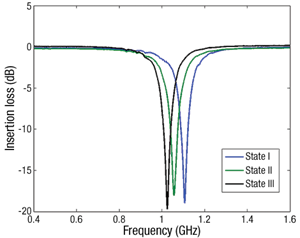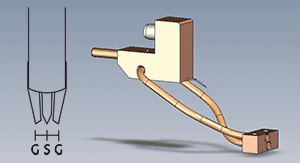 Lake Shore offers microwave configurations with ground-signal-ground (GSG) probe geometry optimized for substrates patterned with coplanar waveguide structures. Both signal and ground traces of the microwave structures must be patterned on the top
layer of the substrate to facilitate top side probing. Measurements can be performed on both passive and active devices to characterize performance metrics such as S-parameters, noise figure, or load-pull parameters.
Lake Shore offers microwave configurations with ground-signal-ground (GSG) probe geometry optimized for substrates patterned with coplanar waveguide structures. Both signal and ground traces of the microwave structures must be patterned on the top
layer of the substrate to facilitate top side probing. Measurements can be performed on both passive and active devices to characterize performance metrics such as S-parameters, noise figure, or load-pull parameters.
Use of GSG microwave probes is more complex than of DC/RF probes. Proper probe alignment of the GSG points with respect to the test substrate is required, and the probe must be planarized with respect to the plane of measurement. Also, calibration may be desired to separate the frequency dependent losses of the measurement setup from the actual device under test.
Application example—Superconducting MEMS filter design
"A novel superconducting RF MEMS switch is implemented in a capacitor bank to realize different capacitance values. The capacitor bank is monolithically integrated to a shunt bandstop resonator. Figure 1 shows the circuit model of the tunable resonator. The resonator consists of a lumped element spiral inductor in series with a switched capacitor bank. Figure 2 illustrates a picture of the monolithically integrated bandstop resonator with the capacitor bank (closeup below). The dimension of the device is 2.7 mm × 1.3 mm, which is extremely miniaturized for a high quality factor tunable resonator. The tunable resonator is measured in the Lake Shore cryogenic probe station. Figure 3 shows the measured results of the three states of the tunable resonator at 4 K. The resonance frequency is initially at 1.107 GHz when all the switches are off (state I); then shifts to 1.057 GHz and 1.025 GHz when the first and the second switches are on, respectively."
Raafat R. Mansour, Ph.D, Professor
Electrical and Computer Engineering Department
University of Waterloo
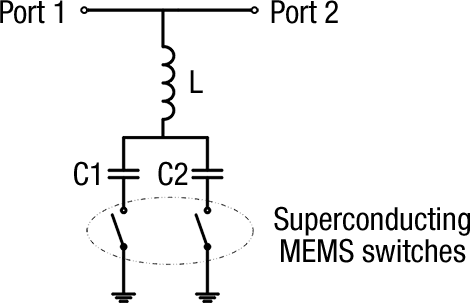
Figure 1
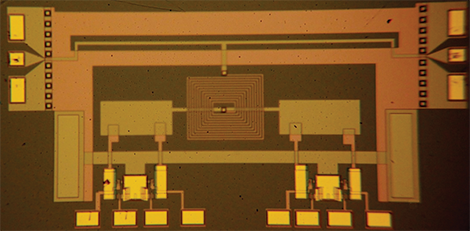
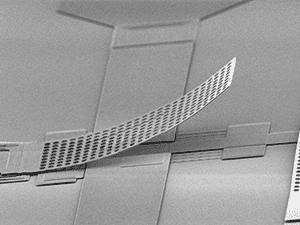
Figure 2
